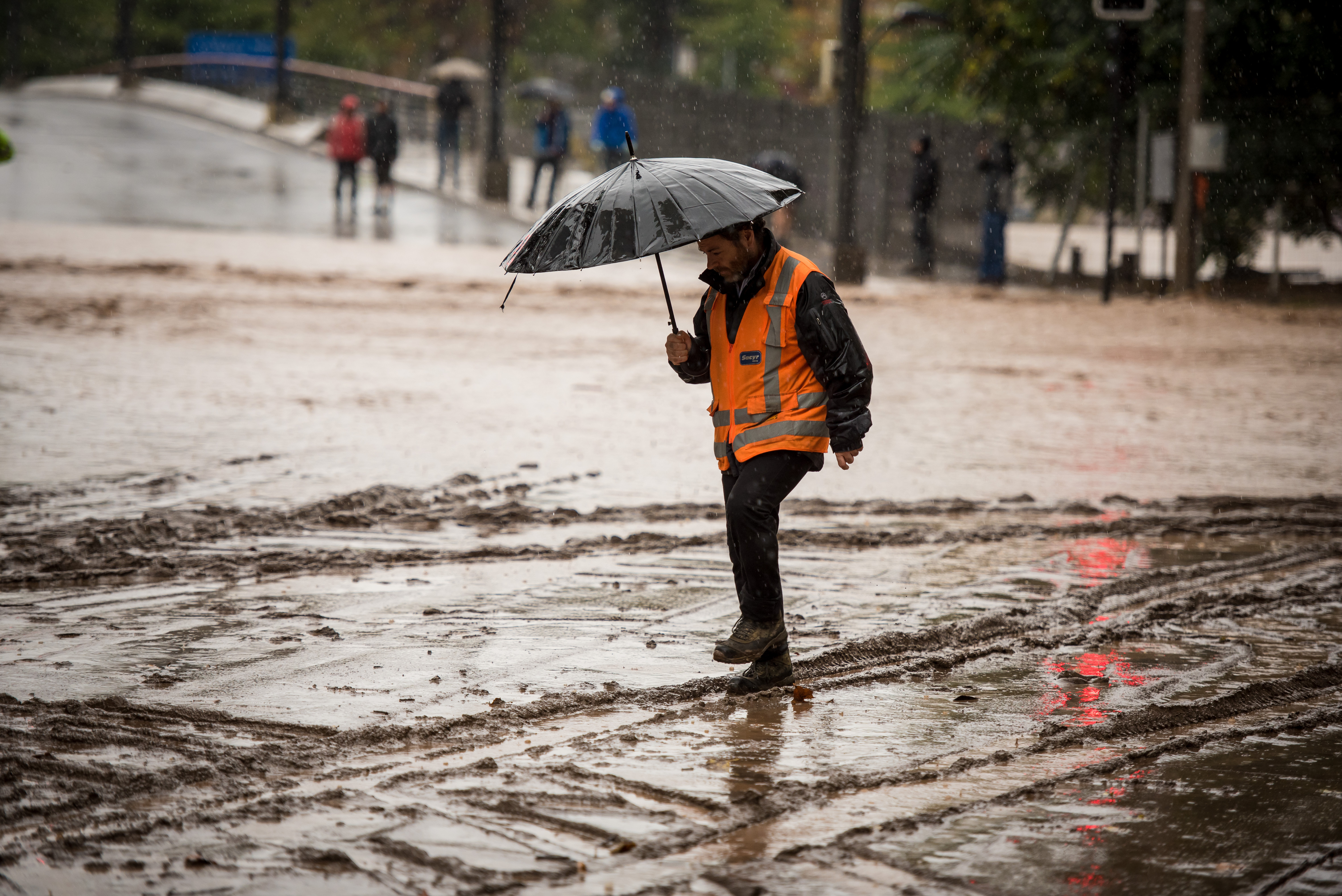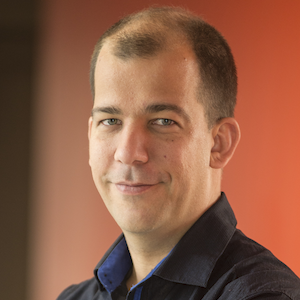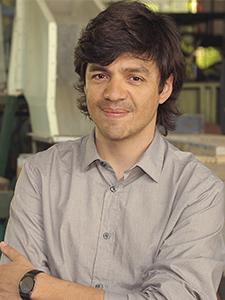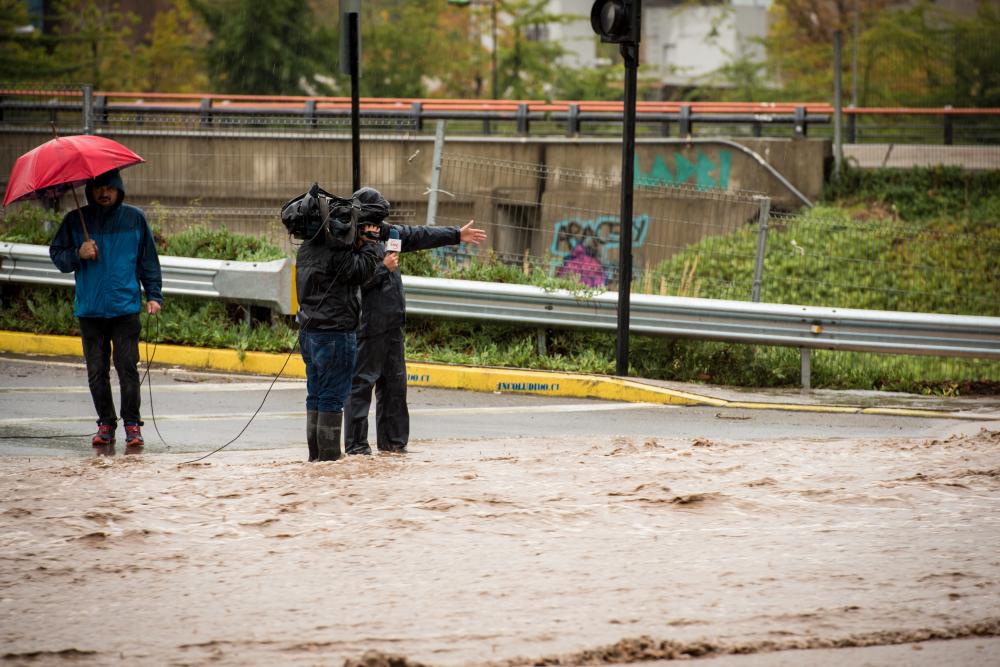
Researchers from Inria at the Inria Antenna at the University of Montpellier and the Inria centre at the University Grenoble Alpes, the Pontificia Universidad Católica de Chile (UC) and the Centro de Gestión Integral del Riesgo de Desastres (CIGIDEN) collaborate in this Associate Team.
We spoke with its leaders, Antoine Rousseau, lead researcher at the LEMON project-team of the Antenne Inria of the Université de Montpellier in France, and Cristián Escauriaza, researcher at the Department of Hydraulic and Environmental Engineering (DIHA) of the UC Faculty of Engineering, to learn more about their work and progress.
Regarding the origin of FLOTTE, how did you first start collaborating?
Antoine Rousseau (AR): The LEMON project-team and UC have a long collaboration since my visit to Inria Chile during 2016. Together with Rodrigo Cienfuegos, director of CIGIDEN, we have been working on coupling algorithms for coastal ocean modeling, and we have also built the TsunamiLab numerical platform, which has been installed in Santiago de Chile and at the Terra Numerica Museum in Sophia Antipolis, in France.
Cristián Escauriaza (CE): Long-term collaborations with the LEMON team, on issues related to renewable energy and natural hazards.
What are the specific areas of research for each of you? What scientific questions are you seeking to answer or have already answered with FLOTTE?
AR: At LEMON, we are specialists in multi-scale urban flood models. In particular, we developed a numerical platform called SW2D-LEMON, in which innovative shallow water type models, which we call "porosity models", are implemented. The main objective of these models is to be able to compute shallow water flows at low resolution (fast computation), taking into account the variation of the terrain below the grid.
CE: As part of our research, we have conducted field observations and developed numerical models to understand the main factors controlling flood risk in mountain rivers in mediterranean and semi-arid environments. These systems are characterized by flash floods with high sediment concentrations. We are interested in advancing this knowledge and developing predictive tools to provide better estimates of potential hazards in urban areas.
What are the objectives of FLOTTE and the expected results?
AR: The objective is to include debris and sediment transport in SW2D-LEMON, and also to evaluate the impact of jam formation on the flow itself. Several directions are identified:
- Coupling of transport and shallow water models: large time step strategies should be considered to account for varying propagation velocities.
- Transport model extension: development of an extended model for modeling water-sediment mixtures.
- Sensitivity analysis: linking the required accuracy of debris characterization to that of flow/risk expected by operational stakeholders.
CE: I would also add the educational objective of preparing new researchers at the graduate level in these resilience-related topics.
What are the specific applications that this project could have or has had?
AR: In general, these models can be applied in river hydraulics.

Verbatim
We will focus specifically on urban flooding with sediment transport, such as can occur in Santiago when the Mapocho River overflows.
Lead researcher at the LEMON project-team
CE: Assess flood hazards in urban areas prone to flash flooding.

Verbatim
Models have a faster response with a physical basis, can be used to develop Early Warning Systems or evaluate scenarios, predicting the potential impacts of climate change.
Researcher at the Department of Hydraulic and Environmental Engineering (DIHA) of the Faculty of Engineering, Pontificia Universidad Católica de Chile
How does the work between the French and Chilean teams complement each other?
AR: Both teams are experts in numerical hydraulic modeling, this is our common language. The Associate Team is a good opportunity to collaborate around improved porosity models (LEMON experience) and sediment transport (UC experience).
Any other thoughts you'd like to share?
AR: If you have specific data on sediment transport (by the Mapocho in Santiago or any other river), do not hesitate to contact us!
What is an Associate Team?
An Associate Team is a joint research project between an Inria project-team and a foreign research team. For a period of three years, the partners jointly define a scientific objective, a research plan and a program of bilateral exchanges, financed by Inria.
Since Inria's arrival in Chile in 2012, 29 French-Chilean research projects in different areas of digital sciences have been funded under this program by Inria.
Currently, there are nine Associate Teams working, in which researchers from Inria centers in France collaborate, such as Inria centre at the University of Bordeaux, Inria centre at the University Grenoble Alpes, Inria centre at the University of Lille, Inria Lyon Centre, Inria Nancy - Grand Est Centre, Inria Paris Centre, Inria Centre at Rennes University, Antenne Inria at University of Montpellier, Inria Saclay Centre, and Chilean institutions, such as the Universidad de Chile, Pontificia Universidad Católica de Chile, Universidad del Bío Bío, Pontificia Universidad Católica de Valparaíso, Universidad Adolfo Ibáñez and Universidad de O'Higgins.


